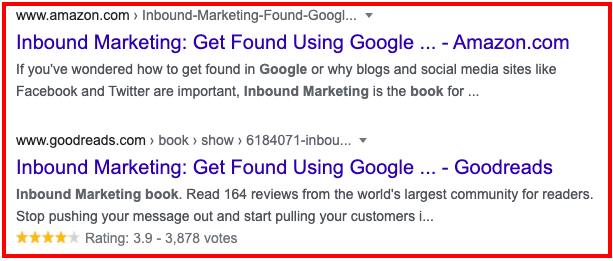30-second summary:
- Accessibility underpins stellar user experience and positive brand perception, the key factors that appeal to value-driven consumers
- According to WebAIM, 98 percent of US-based websites aren’t accessible
- Though not a sparkly aspect of digital marketing strategies, there are multiple layers to “why?” and “how?” brands must be accessible across the internet
Marketers develop and execute numerous strategies to broaden their business reach. But one critical factor that most marketers neglect is web accessibility. And this neglect leads to their business being closed off for a large majority of potential customers.
What is web accessibility?
Web accessibility ensures that the internet is accessible, usable, and beneficial for everyone alike. It considers all possible disabilities to ensure marketing messages are delivered to every kind of audience and get the most value out of the website.
As important as it may seem right now, web accessibility is often the last thing marketers think of when building a website. And then, too, it is often brushed under the rug.
Despite the World Wide Web Consortium, commonly known as W3C developing dedicated web content accessibility guidelines to make the internet more accessible, digital inclusivity remains a rarity.
And this unfortunate reality acts not only as an accessibility barrier, but a growth barrier as well.
The value of web accessibility in modern marketing initiatives
Acknowledging and adopting web accessibility enhances the customer experience, opens new doors for your business, uplifts marketing outcomes, and boosts revenue in more ways than just one.
1. Extends your market reach
15 percent of the world’s population is disabled and belongs to a highly valuable market segment with strong spending powers.
With a digitally inclusive web presence, your business interacts with an increased volume of people who it would’ve missed otherwise. In this way, web accessibility brings a whole new community of prospects you can interact with, win as customers and boost your revenue.
2. SEO benefits
Search engines prefer to rank websites that are secure, accessible, and valuable to all kinds of users. Moreover, they perceive digitally inclusive websites as authentic sources of information and favor them in rankings.
As a result, enhancing web accessibility undeviatingly supplements your online marketing with an SEO boost, helping you get to the coveted top position in SERPs. It opens another channel for web traffic that connects you with your target audience.
3. Enhanced user experience
User experience is at the heart of your digital presence as it relates directly to conversions. The basic principle of UX optimization dictates that you research what your target audience wants and deliver it.
In the case of differently-abled audiences, it’s common sense that they would want you to deliver a website they can interact with and benefit from.
By optimizing your website’s accessibility, you boost its usability which is a core element of user experience.
If all other elements of UX are optimized, enhanced usability wins customer satisfaction and gives the prospect a final push towards conversion, contributing to your revenue.
4. Positive brand perception
Web accessibility enables your brand to appear as a strong advocate of digital inclusivity and works to build positive brand perception. Now isn’t that a critical outcome of modern marketing?
Today where people seek a business’s values before engaging with it, a concrete stance on digital inclusivity reflects your values of empathy, compassion, and equal opportunities for all. This builds your community of like-minded people who then contribute to your revenue.
Five-point checklist to get started with web accessibility
For maximum effect, web accessibility should be considered a priority rather than an afterthought and must be included in your digital and marketing strategy.
Following are a few ways through which you can uplift your digital inclusivity and leave a larger impact:
1. Multilingual SEO
Web accessibility not only aims at eliminating accessibility barriers for people with permanent, temporary, or situational disabilities. It also removes linguistic barriers, so people from all cultural and ethnic backgrounds can have equal access.
Given that English is spoken by a meager 4.83 percent of the world’s population, multilingual SEO eliminates linguistic barriers and helps searchers from all linguistic backgrounds to benefit from the internet.
Here’s a guide I created on multilingual SEO to get you started.
2. Voice search
The introduction of smart assistants such as Alexa has pioneered a new era of voice search ubiquity and the consequent web accessibility.
As an excellent avenue to pursue for businesses looking to be more digitally inclusive, voice search unlocks your website’s chances of interaction with people who cannot search the conventional way.
Here are some best practices to optimize voice search SEO:
- Use long tail keywords that are specific, descriptive, and natural for users’ language
- Serve up content that gives direct answers
- Optimize your ‘Google My Business’ account
- Create voice search FAQ pages
- Implement schema which is a code that you can add to your website that improves search visibility
For more depth, check out this voice search SEO guide for trends and best practices.

3. Alternate (Alt) text
Alt text helps visually impaired visitors understand what a web image depicts. Hence image optimization allows web visitors to absorb the information your website offers in its totality and ties back to enhanced user experience.
Tips for using alt text:
- Keep it descriptive and keyword specific, this will show up in case your page loads slow or if there was an audio description needed
- For ecommerce sites, make good use of structured data to give the search engine more specific details about your products’ color, type, size, and a lot more
If you need more details, here’s an evergreen image optimization guide.
4. Hierarchical organization or content using H tags
Hierarchical layout shapes your web content in an easy-to-read structure. A critical part of web accessibility (and SEO), a hierarchical organization can make your website usable and understandable for users with certain cognitive disabilities and people with short attention spans, boosting their satisfaction and your websites’ overall UX.
Check out this guide on optimizing meta tags.
5. Color contrast
Color contrast involves adjusting the color of foreground web elements (for instance, fonts) against the color of the background elements to ensure that the foreground elements, which bear value, stand out and are easily readable for people with visual impairment.
The Bureau of Internet Accessibility has identified a color contrast ratio that ensures that your website is visible and readable for people with color-related visual impairments.
Conclusion
Web accessibility is a necessity, but unfortunately, it doesn’t get the same limelight as other digital marketing avenues that promise increased reach, better perception, and higher revenue.
This reality can work in your favor if you capitalize on the lack of web accessibility and gain a competitive edge by adopting digital inclusivity.
There are numerous marketing benefits of web accessibility, most significant of which may be the development of positive brand perception in an era of value-driven shoppers.
Inclusive marketing initiatives are commendable. But they are only valuable when backed by conscious efforts of enhancing your business’s digital accessibility. So, endeavoring to actualize web accessibility strategies can help you become the pioneer of an internet era where digital inclusivity is a priority.
Atul Jindal is a web design and marketing specialist, having interests in doing websites/apps optimized for SEO with a core focus on conversion optimization. He creates web experiences that bring conversations and transform web traffic into paying customers or leads.
Subscribe to the Search Engine Watch newsletter for insights on SEO, the search landscape, search marketing, digital marketing, leadership, podcasts, and more.
Join the conversation with us on LinkedIn and Twitter.





